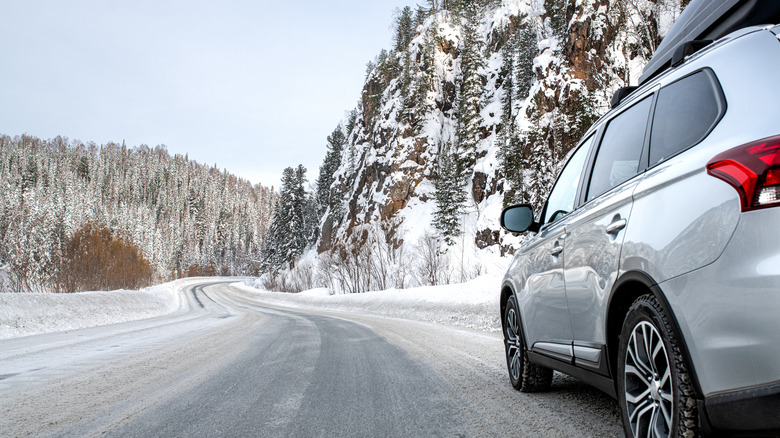This Age-Old Trick Can Help Ensure Tire Safety: Here's How To Do It Correctly
The reason behind the NHTSA's updated Federal Motor Vehicle Safety Standards (FMVSS) in 2007 is mainly to reduce tire failure or blowouts caused by tire degradation or underinflation. As such, FMVSS No. 138 and 139 require all passenger cars and light trucks to have an onboard tire pressure monitoring system (TPMS) to mitigate tire-related crashes.
However, the NHTSA study revealed vehicles with lower tread depths or balding tires (between 0 and 4/32") have a significantly higher chance of tire failure, magnifying the importance of tire condition. In 2021, 622 people died in tire-related crashes, so it's vital to check your tires for proper inflation and excessive wear periodically.
Tires typically have treadwear indicators to show the driver it's time for a tire change. The wear indicators are small, raised sections between the treads. When the tire tread is level with the wear indicator, the tire needs replacing. However, without wear indicators, there's an age-old trick that could help you determine the tread wear of your tires without special tools.
The penny trick works every time
The NHTSA recommends not driving with tires that have tread depths of 2/32 of an inch. Worn-down or balding treads are dangerous, and do not provide the same levels of grip and traction as tires with fresh treads (new tires typically have 10/32" or 11/32" tread depths). If you're unfamiliar with your tire's wear indicators, you only need a penny to determine if your car is safe to drive.
Grab a penny and place it between any tire tread with Lincoln's head upside down and facing your direction. If the top of Lincoln's head is visible, the tread is worn down to 2/32 of an inch and needs replacement. Otherwise, you're good to go. Meanwhile, you could purchase a tire tread depth gauge for more accurate measurements, but a penny works fine.
After measuring the tread depth, pay attention to the tire pressure. Properly inflated tires could help save up to 11 cents per gallon of gas. Check the owner's manual of your ride to know the correct inflation pressure. Lastly, consider checking the tread wear of your tires at least once a month, and don't forget to adhere to the tire rotation schedule to make the most of your existing rubber.
